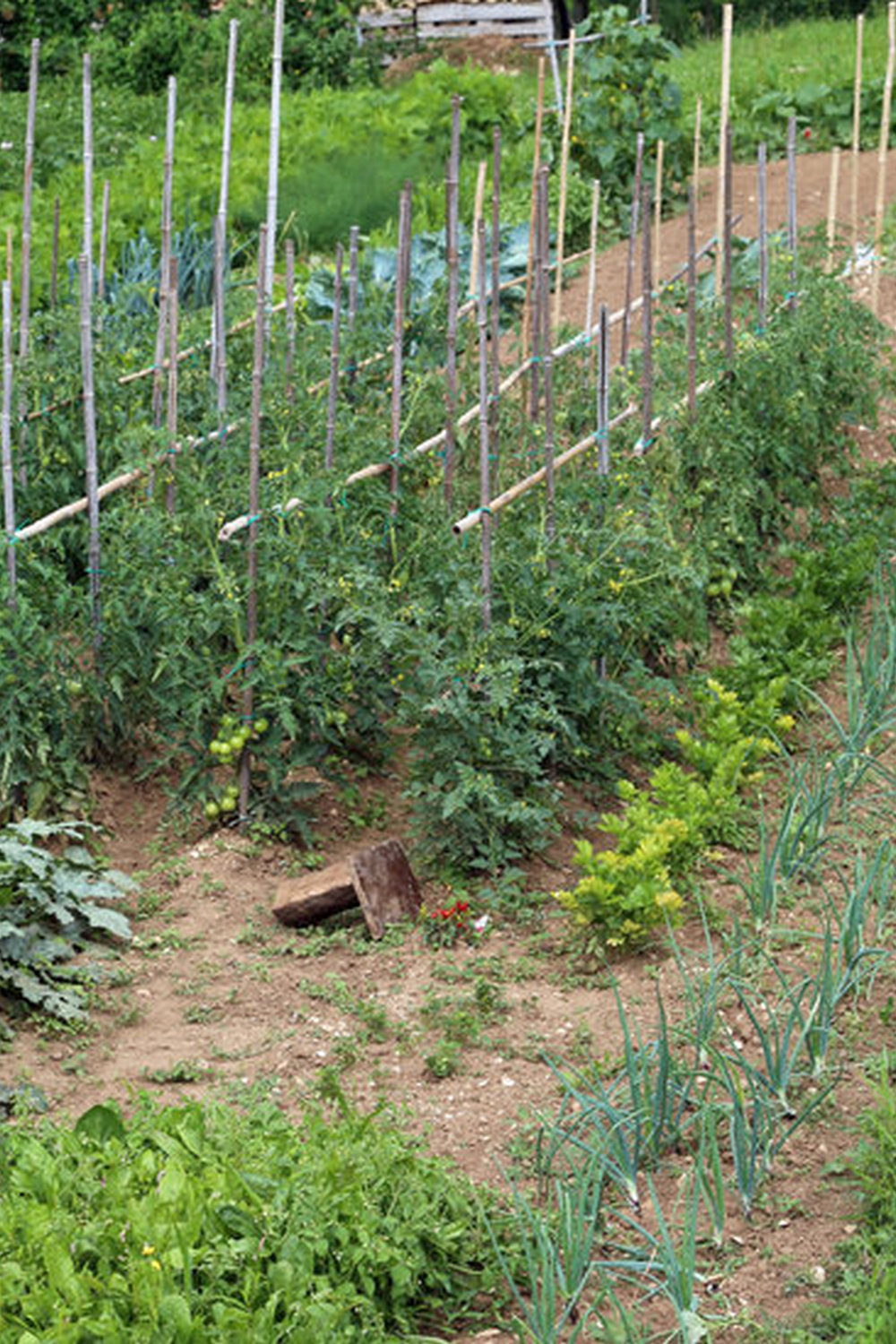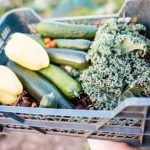Are you interested in starting a vertical garden but not sure which vegetables to grow? In this article, we will explore the best vegetables for vertical gardens and provide tips for successful planting and care. Vertical gardening is a popular and efficient way to grow fresh produce in small spaces, making it ideal for urban dwellers or anyone with limited outdoor space. By utilizing vertical space, you can maximize your vegetable yield and create an attractive green display.
Vertical gardening involves growing plants upwards rather than outwards, using structures like trellises, hanging baskets, or wall-mounted planters. This method not only saves space but also offers numerous benefits such as improved air circulation, easier pest control, and reduced risk of soil-borne diseases. Choosing the right vegetables for your vertical garden is crucial for a successful harvest. Some vegetables are better suited for vertical growth due to their compact size and climbing habits.
When it comes to choosing the right vegetables for your vertical garden, it’s important to consider factors such as sunlight requirements, water needs, and maintenance. In the following sections, we will discuss the top 5 vegetables that thrive in vertical gardens and provide valuable insights on planting and caring for them.
Whether you’re a beginner or seasoned gardener, this guide will help you make the most of your vertical garden space and enjoy a bountiful harvest of delicious home-grown produce.
Benefits of Growing Vegetables in Vertical Gardens
Vertical gardening offers a unique and space-saving way to grow a variety of vegetables. By utilizing vertical space, gardeners can maximize their growing potential and enjoy an abundance of fresh produce. There are several benefits to growing vegetables in vertical gardens, making it an attractive option for both experienced gardeners and beginners.
One of the major benefits of growing vegetables in vertical gardens is the ability to save space. This is particularly advantageous for urban dwellers or those with limited outdoor space. Vertical gardens can be set up on balconies, patios, or even inside the home, allowing individuals to grow their own food without the need for a large yard or plot of land. Additionally, vertical gardening can help improve air quality and reduce energy consumption by providing shade and insulation.
Another benefit of vertical gardens is the reduced risk of pests and diseases. Growing plants off the ground can help minimize contact with soil-borne pathogens and make it more difficult for pests to access your crops. This can result in healthier plants and higher yields, ultimately leading to a more successful gardening experience.
Finally, vertical gardening allows for better utilization of resources such as water and fertilizer. The design of many vertical garden systems promotes efficient irrigation and nutrient distribution, helping to conserve water and minimize waste. Additionally, this method of gardening can also make it easier to control weeds, leading to less time spent on maintenance tasks.
| Benefits | Details |
|---|---|
| Space Saving | Vertical gardens maximize growing potential in small spaces |
| Pest and Disease Control | Elevated plants reduce contact with pests and soil-borne pathogens |
| Resource Utilization | Efficient irrigation system helps conserve water and manage nutrients effectively |
Choosing the Right Vegetables for Vertical Gardens
When it comes to choosing the right vegetables for vertical gardens, it’s important to consider the space you have available and the specific growing conditions of your vertical garden. Some vegetables thrive in this environment, while others may struggle to adapt.
Consider the Size and Weight of Vegetables
One important factor to consider when choosing vegetables for your vertical garden is their size and weight. Leafy greens such as lettuce, spinach, and kale are great options as they are lightweight and don’t require a lot of space. On the other hand, larger vegetables like tomatoes, cucumbers, and peppers can be more challenging to grow in a vertical setting due to their weight and size.
Choose Fast-Growing Varieties
When selecting vegetables for your vertical garden, it’s beneficial to choose fast-growing varieties that will quickly fill out the available space. Vegetables like radishes, green onions, and microgreens are excellent choices for vertical gardens because they mature relatively quickly, allowing you to enjoy a steady harvest throughout the growing season.
Consider Vertical Garden-Friendly Vegetables
Some vegetables naturally lend themselves well to vertical gardening due to their growth habits. Vining plants such as beans, peas, squash, and cucumbers can easily climb trellises or supports, making them ideal candidates for vertical gardens. Additionally, herbs such as basil, oregano, and mint also thrive in this setting and can add flavor and interest to your garden.
By carefully considering the size and weight of vegetables, choosing fast-growing varieties, and selecting plants that are well-suited for vertical gardening, you can ensure a bountiful harvest from your vertical garden. With these considerations in mind, you’ll be well on your way to creating a thriving and productive vertical vegetable garden.
Top 5 Vegetables That Thrive in Vertical Gardens
When it comes to deciding what vegetables grow best in vertical gardens, there are a few key factors to consider. The top 5 vegetables that thrive in vertical gardens have certain characteristics that make them well-suited for this type of growing environment. Not only do these vegetables produce well when grown vertically, but they also help maximize space and are relatively low-maintenance.
Tomatoes
One of the most popular choices for vertical gardening, tomatoes thrive when grown vertically. Compact varieties such as cherry or grape tomatoes are excellent options as they don’t require a lot of space and can be easily trained to grow upwards. Additionally, trellises or cages can provide the necessary support for the vines as they produce an abundance of fruit throughout the season.
Cucumbers
Cucumbers are another vegetable that does exceptionally well in vertical gardens. With their sprawling vines, cucumbers take up a lot of space in traditional gardens, but when grown vertically, they can be trained to grow upwards, saving valuable ground space. By providing adequate support for the vines to climb, cucumbers can thrive in a vertical garden setting while also producing an abundant harvest.
Peppers
Bell peppers and chili peppers are ideal for vertical gardening due to their compact size and upright growth habit. Peppers also prefer warm temperatures, making them perfect for thriving in the sun-drenched conditions often found in vertical garden environments. When provided with sufficient support for their stems and fruits, peppers can flourish and produce a bountiful crop when grown vertically.
Tips for Planting and Caring for Vertical Garden Vegetables
When it comes to planting and caring for vegetables in vertical gardens, there are some important tips to keep in mind to ensure a successful harvest. One of the most crucial aspects of vertical gardening is choosing the right vegetables that are well-suited for this type of growing environment.
Consider the space, sunlight, and water requirements of each vegetable before planting to ensure they will thrive in a vertical garden. Additionally, it’s important to properly prepare the soil and provide adequate support for the plants as they grow vertically.
In addition, proper spacing is essential when planting vegetables in a vertical garden. Since space can be limited in a vertical setup, it’s important to space out your plants accordingly to avoid overcrowding and competition for resources. Planning and organization are key when it comes to maximizing the potential of your vertical garden and ensuring that each plant has enough room to grow.
Furthermore, regular maintenance and care are also crucial for the health and productivity of your vertical garden vegetables. This includes regular watering, monitoring for pests and diseases, and providing necessary nutrients through fertilization. Taking the time to care for your vertical garden vegetables will ultimately lead to a bountiful harvest of fresh produce that you can enjoy with your family.
Vertical Garden Design Ideas for Vegetable Growth
When it comes to designing a vertical garden for growing vegetables, there are several creative and practical ideas to consider. Here are some design tips to help you make the most of your vertical space:
1. Utilize Vertical Structures: Consider using trellises, fences, or walls as support for your vertical garden. Install hooks, shelves, or hanging baskets to maximize the use of vertical space and create a visually appealing display of vegetables.
2. Container Selection: Choose the right containers for your vertical garden. Lightweight containers such as fabric pots or plastic pouches work well for vertical gardening. You can also repurpose items such as shoe organizers or pallets to create a unique container garden.
3. Vertical Hydroponic Systems: If you are interested in hydroponic gardening, explore the option of setting up a vertical hydroponic system for growing vegetables. This method allows for efficient nutrient delivery and water conservation while maximizing space.
By incorporating these design ideas into your vertical vegetable garden, you can create an attractive and productive growing space that will yield a bountiful harvest of fresh produce.
Common Mistakes to Avoid When Growing Vegetables Vertically
When growing vegetables in vertical gardens, there are some common mistakes that should be avoided to ensure a successful harvest. One of the most important things to keep in mind is to choose the right vegetables for vertical gardening. Not all vegetables are suitable for this type of growing environment, so it’s essential to do research on what vegetables grow best in vertical gardens. Choosing the wrong plants can lead to disappointment and wasted efforts.
Another mistake to avoid is overcrowding your vertical garden. It can be tempting to pack as many plants as possible into a small space, but this can lead to competition for nutrients and sunlight, resulting in stunted growth and poor yields. It’s important to follow spacing guidelines for each type of vegetable and resist the urge to over-plant.
Overlooking proper maintenance and care is another common mistake when growing vegetables vertically. Just like traditional gardens, vertical gardens require regular watering, fertilizing, and pest control. Neglecting these tasks can result in unhealthy plants and a disappointing harvest. Additionally, not providing adequate support for climbing or vining plants is a mistake that can lead to damaged or broken stems, limiting the plant’s ability to produce.
By avoiding these common mistakes and following proper planting and care techniques, you can successfully grow a variety of vegetables in your vertical garden. Remembering to choose the right vegetables for vertical gardening, avoiding overcrowding, and providing proper maintenance will help you enjoy a bountiful harvest from your vertical garden.
Harvesting and Enjoying the Fruits of Your Vertical Garden Efforts
Now that you have successfully grown your vegetables in a vertical garden, it’s time to reap the rewards of your hard work. Harvesting your homegrown produce is not only satisfying but also ensures that you get to enjoy fresh and flavorful vegetables right from your own garden.
When it comes to harvesting vegetables from your vertical garden, timing is key. You’ll want to pick your vegetables when they are at their peak ripeness to enjoy the best flavor and nutrient content. Here are some guidelines for harvesting common vertical garden vegetables:
- Tomatoes: Harvest when they are firm and fully colored. Simply twist them off the vine or use a pair of clean scissors to snip them off.
- Lettuce: Pick the outer leaves as needed, leaving the inner leaves intact to continue growing.
- Cucumbers: Harvest when they reach 6-8 inches in length and are still firm to the touch.
- Bell Peppers: Wait until they reach full size and have turned their characteristic color (red, green, yellow) before harvesting.
- Green Beans: Harvest when they are young and tender, picking them often to encourage more production.
Once you’ve harvested your vegetables, it’s time to savor the flavors of your labor. From salads to stir-fries, there are endless ways to enjoy the fresh produce from your vertical garden. Involve your family and friends in enjoying the fruits of your labor by sharing your homegrown bounty with them. Remember that nothing tastes better than homegrown vegetables picked at their peak.
Conclusion
In conclusion, vertical gardening offers a multitude of benefits for both seasoned gardeners and beginners alike. With the right selection of vegetables, such as tomatoes, peppers, lettuce, cucumbers, and herbs, you can successfully cultivate a thriving vertical garden. The upward growth of plants not only maximizes space but also allows for better air circulation and sunlight exposure, resulting in healthier and more abundant yields.
By embracing the vertical garden lifestyle, you can enjoy the satisfaction of growing your own fresh produce while minimizing the impact on the environment. The versatility of vertical gardens allows them to thrive in urban settings or as part of your home’s decor. With proper planning and care, anyone can create a lush and productive vertical garden regardless of their available space or prior gardening experience.
In addition, it is important to remember that while some vegetables grow best in vertical gardens due to their climbing or vining nature, others may require additional support or strategic placement within the structure. Overall, with the right knowledge and resources at your disposal, you can embark on an exciting journey into the world of vertical gardening and reap the rewards of your efforts for years to come.
Frequently Asked Questions
What Vegetables Work Well in a Vertical Garden?
Many vegetables work well in a vertical garden, including tomatoes, cucumbers, peppers, and peas. These vining or climbing plants are perfect for utilizing vertical space in a garden and can thrive when given proper support.
What Plants Are Good for Vertical Gardening?
Plants that are good for vertical gardening are those that have the ability to climb or vine, such as various types of herbs like mint, thyme, and oregano. In addition, flowers like morning glories and sweet peas are also great choices for adding color to a vertical garden.
What Vegetables Can Grow on a Trellis?
Several vegetables can grow on a trellis, including cucumbers, beans, peas, and squash. These vegetables benefit from the support of a trellis as they grow upwards instead of sprawling across the ground, making them ideal for smaller gardening spaces.

If you’re looking to get into vegetable gardening, or are just looking for some tips on how to make your current garden better, then you’ve come to the right place! My name is Ethel and I have been gardening for years. In this blog, I’m going to share with you some of my best tips on how to create a successful vegetable garden.





